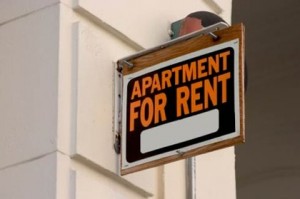
Rental demand is expected to skyrocket in the coming years, but are some analysts misjudging what is really a fad?
By Peter Ricci
Another day, another hugely optimistic analysis for rental demand in the U.S. real estate market.
FirstService Residential Realty, the nation’s largest residential single-family property management company according to HousingWire, is the latest to throw its hat in the ring, predicting that rental demand will increase by nearly 6.6 million units through 2016, with 4.2 million new renters contributing to that total.
Rental Demand – A Product of Market Forces
As HousingWire recently noted in a story on rental demand, a number of factors have led to today’s multifamily zeal:
- First, the vast majority of new construction has been for multifamily units, given the over-supply of single-family units during the housing boom years.
- Secondly, the quality of the single-family housing inventory has also influenced rental demand. Shadow inventory, said Jim Warren, FirstService’s chief marketing officer, remains high, and with so many homes still stuck in the pipeline, rental properties have been a stable alternative.
- And of course, there’s the common argument that with underwriting standards still tight, that consumers have opted to rent, rather than go through the supposedly laborious homebuying process.
- But as Barclays has noted, the homeownership rate has fallen in the post-boom market from 69 percent to 65 percent, and when adjusted for shadow inventory, it’s down to 61 percent.
Are We Entering A New Era for Housing?
All that data lead to what has become a common question in housing circles – is the current rental spike a new era for housing, or a temporary movement brought on by the worst housing crisis since the Great Depression?
For Warren, it’s the former, a readjustment to how burgeoning professionals interpret housing in America.
“Homes used to be your retirement savings plan and our father’s, our parents, they all pushed us and said ‘you’ve to own your own home, pay for it and get it paid for before you retire,'” Warren said. “I think everyone’s seen their parents take a massive hit in that asset and I think culturally, our generation looks at that and goes ‘that’s not my retirement plan anymore.'”
But at the same time, there are not only studies that suggest the apartment boom may be waning, but surveys that suggest that American’s appetite for home ownership is still as strong as ever.
Jeff Burke, the founder of real estate data company NuHabitat, said there are two things to consider when surveying rental demand in Houston – why rental demand is so high in the city, and what it suggests about homeownership.
“In Houston there are several different factors effecting the rental markets,” Burke said. “First, we are having a population explosion and with that influx of people moving to Houston, our rental market is very tight. Home leasing is slim and there is a tremendous amount of apartment construction underway to meet the demand in Houston for young people relocating for employment.
“The next question you have to ask is wether or not homeownership remains the American dream” he continued. “I wouldn’t rush to judgement on that anymore with the younger demographic. I think that sentiment could be changing and homeownership may not be the top priority for young people. This is not a change that will take place overnight, but I do see indications that young people do not put the same value in homeownership that older people once did. That, in turn, tightens our rental markets even further.”
